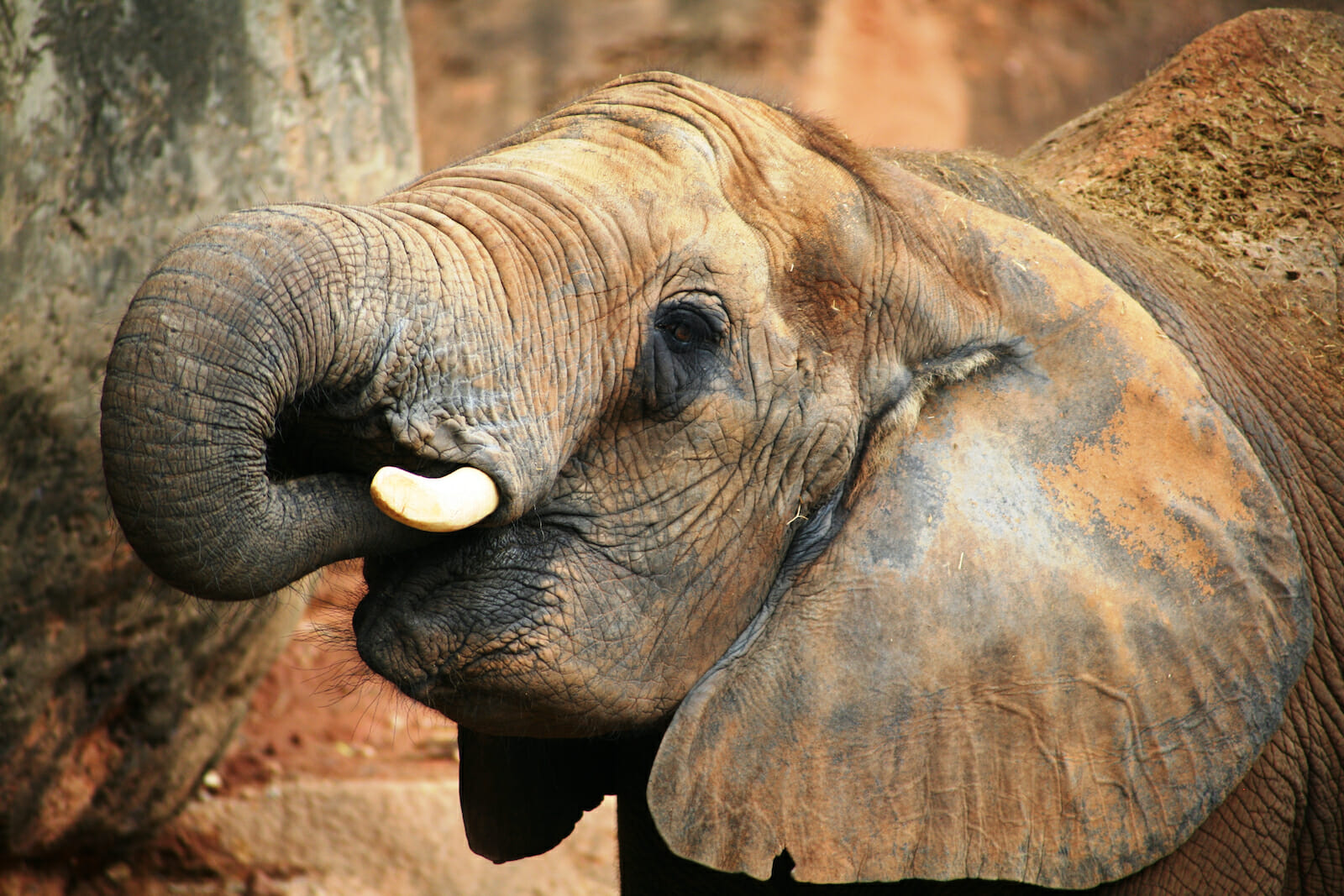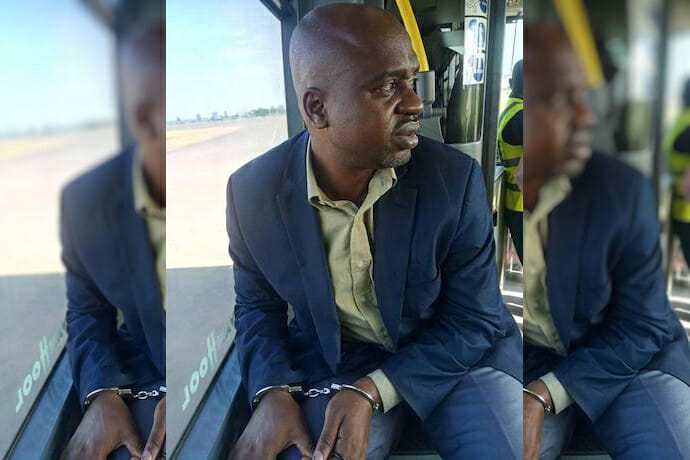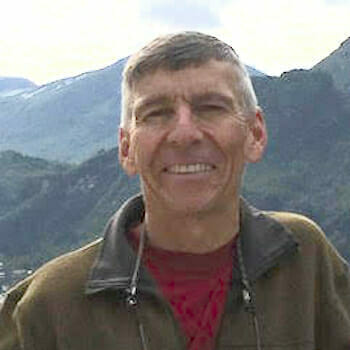
Moazu Kromah and the Case of the West African Ivory Cartel
In a landscape where the obtaining of false passports, birth certificates, and identification cards is simply a matter of cost and a good “broker,” it is anyone’s guess as to whether “Moazu Kromah” was so named at birth or if he really is Liberian. On June 13th, 2019, the day after his being “expelled” from Uganda, the man known by several aliases including; “Croma,” “Kromah Moazu,” “Ayuba,” and “Kampala Man,” found himself in front of a New York South District court for the trafficking of ivory and rhino horn in Africa since 2012. There was a minimum of fanfare. On the gauge of open-source media attention, the needle barely moved.
And while his actual name and nationality may be in doubt, the significance of this arrest is not. In an unprecedented joint operations investigation between U.S. Fish and Wildlife, the U.S. Drug Enforcement Administration, the Uganda Wildlife Authority (UWA) and Ugandan NGO, Natural Resources Conservation Network (NRCN), Moazu Kromah, Amara Cherif of Guinea, and two Kenyans, Mansur Mohamed Surur and Abdi Hussein Ahmed, were charged with wildlife trafficking, drug trafficking and money laundering. Amara Cherif had been arrested five days previously in Senegal while Surur and Hussein Ahmed are now listed as fugitives.
While 10 kilograms of heroin was recovered in this undercover investigation, make no mistake about it, this operation was about Kromah and wildlife trafficking. The U.S. Department of Justice press release labeled Kromah and his co-accused as “members of a transnational criminal enterprise.” The evidence, however, suggests that this was considerably understated and in all likelihood, Kromah and his “enterprise” were one of the biggest suppliers of ivory and illegal wildlife on the African continent in the past decade. In February 2017, Kromah, along with Guinean nationals, Kourouma Bangaly, and Mohamed Kourouma, were arrested in a fortified compound and found with 437 pieces of ivory weighing in at 1.3 tonnes. NRCN and UWA, who made the arrest, described Kromah at the time as “the center of a vast ring of organized crime criminals…connected to at least four other major criminal syndicates in Africa…supplying rhino horn and ivory to the biggest wildlife criminal syndicates worldwide.”
Documentary evidence found at that time indicated financial transactions between Kromah and the man referred to as the “Pablo Escobar of Wildlife Trafficking,” Laotian Vixay Keosavang. It is almost a certainty that Kromah sold ivory to the other major names in the international wildlife crime (IWC) trade including Thai/Vietnamese smuggler Boonchai Bach, Kenyan Feisal Ali Mohammed (the Akasha drug family), and the Ivory Queen (aka Yang Feng Glan) in Tanzania.

The clinical wording in the Department of Justice indictment spells out clearly the expansiveness of Kromah’s cartel, especially bearing in mind that what is written is only what can be proved in a court of law. He and his network were transporting, distributing, selling and smuggling at least 190 kilograms of rhino horn and 10 tonnes of elephant ivory in seven different countries beginning at least since December 2012. When one considers the law enforcement indicator matrix that contraband seized is approximately 5-10% of the actually amount trafficked the numbers are beyond staggering.
A Handful of Networks
The public and indeed investigators, will never really know the true extent of Kromah’s illegal activities. The lines between different organized crime syndicates are blurred with “brokers” at multiple levels and corrupted government officials feeding from many troughs in many countries. Investigators often find transnational cooperation crippled by corruption while lack of trust and donor funding rivalry impedes working relationships between various investigative NGO’s. It is crystal clear to all that follow IWC, that ivory, rhino horn, and pangolins, etc. are still going primarily to China, Hong Kong, and Vietnam. What has always been muddled is who in Africa is providing it.
An August 2017 report by Tristan McConnell published in the Guardian (“‘They’re like the mafia’: the super gangs behind Africa’s poaching crisis”) presented a brilliant overview as to the cartel aspect of ivory trafficking from the African continent. The hypothesis presented was that “there may be as few as three major trafficking networks in Africa, running their operations out of Entebbe (Kampala) in Uganda, Lomé in Togo and Mombasa, Kenya.”
Dr. Paula Kahumbu noted Kenyan conservationist and elephant expert stated: “It’s not hundreds of groups involved in ivory trafficking, there are just a handful of networks operating across Africa.” Dr. Sam Wasser noted biologist and conservationist, through his groundbreaking ivory DNA work, came to a similar conclusion. And through a totally different methodology, transnational organized crime expert, Gretchen Peters, at the time working on “business” connections between ivory logistician, Feisal Ali Mohammed and the Akasha drug family, again reached a similar finding.
Dr. Wasser connected 13 large ivory seizures (exceeding 500 kilograms) made between 2011 to 2015 to the Akasha drug network. But with the Akasha’s based in Mombasa, and the majority of savannah elephant ivory at the time coming from Mozambique and Tanzania through Uganda, were the Akasha’s just a higher level of broker being supplied by someone else?

Dr. Wasser and his team at the University of Washington expanded and refined their work in a 2018 report published in Science Advances, “Combating Transnational Organized Crime by Linking Multiple Large Ivory Seizures to the Same Dealer.” In their report, the number of linked ivory seizures was now up to 16 and still centered on cartels they believed were working in Togo, Entebbe/Kampala, and Mombasa. Could they all be the same cartel?
Amongst those 16 linked seizures was a landmark confiscation by customs officers in Malaysia in December 2012. Agents found in two shipping containers, six tonnes ivory comprised of four tonnes of savannah ivory from East Africa and 2 tonnes of forest ivory from West Africa. The ivory had started its journey out of Mombasa port but also stopped in Lome, Togo, as one of its ports of call.
It can be no coincidence that Moazu Kromah’s indictment reads that his wildlife trafficking activities started “from at least in or about December 2012,” the period covering the Malaysia seizure. A subsequent DNA analysis of that ivory by Dr. Wasser indicated that the tusks originated from at least nine different African countries. Even more significant, there were genetic matches (one tusk of a pair in one shipment and the second in another shipment) between the Malaya seizure and four other shipments; Sri Lanka in May 2012, Togo in August 2013, Mombasa in October 2013, and Togo again January 2014. With both Sri Lanka and Mombasa seizures ‘packaged’ in Kampala, was the same syndicate involved with the Togo ivory?
In Togo, in August 2013, six months after the Malaysia seizure, it seemed that the answer was provided. A Togolese national by the name of Emile N’Bouke was arrested to great fanfare in Lome, by investigative NGO, EAGLE Network, while in possession of .8 tonnes of ivory. Media reports referred to him as “The Boss” or “Le Patron” responsible for the deaths of thousands of elephants. N’Bouke, not surprisingly, denied his guilt and pointed the finger at a Guinean syndicate that were recent arrivals to the Togolese ivory scene.
While most scoffed at N’Bouke’s self-serving statements, conservationist and photographer Karl Ammann completed his own investigation and presented another perspective. Ammann hypothesized that there was indeed merit in N’Bouke’s accusations and that there was clear evidence of a “Guinean Ivory Mafia” in Togo. Indeed, what did not make most bylines, two of N’Bouke’s co-accused were Guinean nationals identified as Djifa Doumbouya and Moussa Cherif. There is significance in the names.
The Guinean Ivory Mafia
Guinea, with no disrespect intended, could be considered by many to be not extraordinary. A French-speaking, predominantly Muslim country, with a population of approximately 13 million, it is located on the west coast of Africa and borders Senegal, Mali, Guinea Bissau, Cote d’Ivoire, Liberia and Sierra Leone. It is slightly larger than the UK and slightly smaller than the state of Oregon. It is not particularly well known for its biodiversity especially on a continent that thrives on wildlife tourism. If one was to Google “top sites to see in Guinea,” one may find mention of a couple of national reserves or parks. What is extraordinary, however, and not widely realized, is the highly disproportionate number of its nationals involved in IWC across the African continent and particularly in illegal ivory sales.
But could a “Guinean Ivory Mafia” have tentacles in Mombasa, Kenya? It turns out that yes, it could. In May 2014, Kromah’s Guinean co-accused, Mohamed Kourouma, was arrested in Mombasa with four other Kenyans in the possession of 25 kilograms of ivory. Kourouma was actually arrested in a controlled delivery scenario. One of the co-accused had their bail posted by Mahmoud Abdulrahman Sheikh who was arrested with his two sons one year later, alleged to have shipped over seven tonnes of ivory to Thailand and Singapore from Mombasa. (Kourouma was eventually acquitted as were all but one of the five.)
Another of Kourouma’s co-accused in the Mombasa arrest, Kenyan Bernard Musau Mailu, had been arrested six months previous in Nairobi with 55 kilograms of ivory and in the company of Guinean, Traore Lancini. According to official sources, Traore Lancini was deported to Guinean mid-trial. Traore’s name also came up in a 2014 KTN news special investigative report entitled “Poachers and Butchers.” Traore was listed as part of a group working with Kenyan Fredrick James Muchina, named as a local kingpin in the ivory and rhino horn trade. In January 2016, Muchina was ambushed and shot six times in a murder that had all the indicators of an extrajudicial killing.
Another Kenyan-Guinean connection was also seen in April 2014 when Guinean national N’Faly Doukoure was arrested in the Nairobi area with Kenyan co-accused Kenneth Maina Kamau. They were found in possession of 784 kilograms of ivory hidden in a water tanker. Kamau had been previously charged and acquitted in attempting to air freight 1,332 kilograms of ivory and 5 rhino horn out of Jomo Kenyatta International Airport in 2010. N’Faly Doukoure was, like Traore Lancini, deported mid-trial but this time on a signed order from the Cabinet Secretary of the Interior.
This apparent Guinean syndicate also appears to be reinforced with a smattering of conspirators from other West African countries including Mali, Senegal and Cote d’Ivoire to name but a few. As a modus operandi, they are all adept at the use of aliases and bogus travel documents. The reversal of given name and surname and/or the alteration of spelling using phonetics is particularly popular. For example, Mohamed Kourouma, when arrested in Mombasa in 2014, identified himself as both Mohammed Kuoruoma and Mohamed Nkoroumah.
Is it a coincidence that three Guineans involved in IWC have names identical to those of professional international footballers; Mohamed Kourouma for one, as well as Ibrahima Traore, charged with smuggling chimpanzees in 2016 and Mamadi Kaba (or is it Kaba Mamadi?) an ivory supplier on the run in Congo in 2018.
On September 15, 2016, in an arrest that was captured in the documentary, “The Ivory Game,” Ibrahim Onzima and Muhammad Kulubale were caught in the act of delivering 250 kilograms of ivory to a Chinese undercover buyer. The two accused were also found in possession of travel documents for Burundi, Chad, South Sudan, Central Africa Republic, and Mali. The name ‘Kalubaly,’ and identified as a Guinean, appeared in an investigation one year later but this time from Thailand and involved in an ivory shipment from Nairobi.
Familial involvement is also part of this West African ‘cartel.’ The father and son team of Abdourahamane and Abdoul Salam Sidibe are well known for their involvement in the illegal trade of chimpanzees and gorillas. Also part of that “branch” are the uncle and nephew team of Mohamed and Ibrahima Traore, arrested in 2016 in Cote d’Ivoire. And enabling them? Ansoumane Doumbouya, the then CITES (Convention on International Trade in Endangered Species of Wild Fauna and Flora) representative to Guinea handing out fraudulent export certificates. His authorization permitted the illegal exportation to China of at least 138 chimpanzees and 10 gorillas. He was arrested in 2015, convicted to 18 month’s jail and later given a presidential pardon. A possible familial connection between Ansoumane and Djifa Doumbouya, co-accused to Emile N’Bouke?
The name of Cherif and its derivatives has also been popular. Amara Cherif, one of Kromah’s co-accused in the most recent charge, had actually been on Interpol’s Red Notice list for wildlife offenses in Tanzania. We have seen Moussa Cherif as a co-accused with Togolese Emile N’ Bouke in the 1,875 pound seizure. A Musa Cherif’ aka ‘Morlaye Cherif’ was part of a 95 kilograms ivory seizure in the Gilgil area of Kenya in July 2014. In January 2015, an ‘Abdul Malik Shariff’ was arrested in Nairobi with two Kenyans in possession of 155 kilograms of ivory. And in June 2016, ‘Ally Sharif’ was arrested in Dar-es-Salaam, Tanzania, with nine others (including another Guinean) dealing 1.3 tonnes of ivory.
Other significant captures of Guinean nationals included Kaba Mamadi and Djani Ousmane, caught up in Freeland/Lusaka Agreement Task Force operation in Congo and DRC in May/June of 2018. Both agencies identify the involvement of a Guinean Mr. Big of the wildlife trade who were said to be part of “a major criminal supply chain that has been smuggling multiple tons of elephant tusks and pangolin scales from Africa to Asia for several years.” In January 2018, a Vietnamese syndicate in Cote d’Ivoire was broken up with the arrest of Vietnamese national Tran Van Tu and the seizure of 478 kilograms of ivory and 600 kilograms of pangolin scales. A Guinean national identified as an ivory supplier was also arrested in that sweep. Six months earlier and also in Cote d’Ivoire, eight West Africans from Ivory Coast, Burkina Faso and Guinea were arrested in possession of 3 tonnes of pangolin scales. They were said to have been part of a “large mafia-like network.”
Balance of Probabilities
Moazu Kromah’s (or should it be Kourouma) indictment also alleges that he and his “enterprise” “conspired to transport, distribute, sell, and smuggle…from or involving various countries in East Africa, including Uganda, the Democratic Republic of the Congo, Guinea, Kenya, Mozambique, Senegal, and Tanzania.” A Google search will confirm that since 2012, Guinean nationals and/or other West Africans have been arrested in all those countries for IWC offenses with the addition of Cote d’Ivoire, Malawi, Burundi, Nigeria, and Thailand. Almost all of these arrests are in circumstances where the West African involvement would not be considered to be subordinate or localized.
As of this date, the list of ivory seizures of significance that can be linked through either scientific DNA evidence and/or circumstantial evidence now stands at 30. How can that not involve but a few major players or less?
While it may be a long shot to prove Kromah’s direct, singular involvement in many of these seizures “beyond a reasonable doubt,” the big picture surely presents another perspective. In fact, when one considers the numbers of Guineans arrested, the varied locations and circumstances of those arrests, over a continued and extended period of time, with a distinctive modus operandi, it is, on a balance of probabilities, inconceivable to reach any conclusion but one: the existence of a powerful and far-reaching West African cartel, that has been supplying thousands of tonnes of forest and savannah elephant ivory for almost a decade to the insatiable markets of southeast Asia.
Moazu Kromah’s arrest and indictment in the United States for wildlife crimes committed in Africa is a milestone for IWC that can hopefully be replicated. A continent away from the host of government and law enforcement officials whose influence he has surely paid for in the past, the expectation now is that justice will prevail, unfettered by corruption. It remains to be seen as to whether Laotian Vixay Keosavang, with a one million dollar bounty on his head, is the actual end game. Regardless, Kromah is in a pole position to deal leniency for the potential havoc to be wreaked against former “business associates.” There are others who will surely fall.

